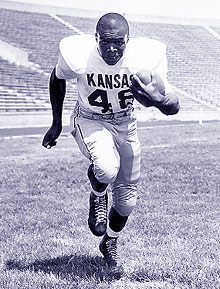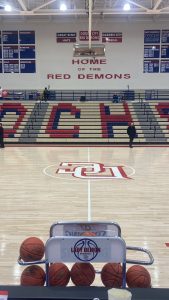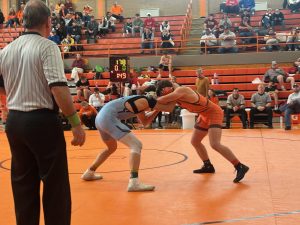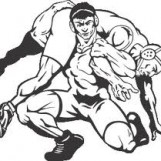KU to Unveil Gale Sayers and John Hadl Statues on October 3

University of Kansas Athletics
(Courtesy of Kansas Athletics)
LAWRENCE, Kan. – Bronze statues of legendary Kansas Football players John Hadl and Gale Sayers will be unveiled outside the Anderson Family Football Complex at halftime of the Jayhawks game on Oct. 3 vs. Oklahoma State. Because of the COVID-19 pandemic, this event will not be open to the public to attend in-person, but fans will be able to watch the ceremony online through KUAthletics.com. For those fans in attendance for the game, the ceremony will be live streamed on the videoboard in-stadium.
Two of the greatest players to ever suit up for the Jayhawks, Hadl and Sayers become the first two Kansas Football representatives to have statues of their likeness on the University of Kansas campus. Each statue stands eight-feet tall if standing upright and weighs close to 1,000 pounds.
Hadl, who played at Kansas from 1959-61, etched his name into Jayhawk lore with three brilliant seasons. The first two-time All-American in program history, Hadl starred for the Jayhawks both as a quarterback and halfback. A three-time all-conference selection, Hadl finished his career with 1,281 passing yards and 1,016 rushing yards, on top of leading the nation in punting in 1959. He also shined as a defensive back and return specialist.
Hadl’s No. 21 jersey is one of three retired Kansas Football numbers, joining Sayers and Ray Evans. Hadl still holds the school record for longest interception return (98 yards vs. TCU in 1959) and longest punt (94 yards vs. Oklahoma in 1959).
The Jayhawks went 14-5-2 during Hadl’s junior and senior seasons and ranked nationally in the top 20 each season. Hadl’s dazzling career concluded by being named MVP of the 1961 Bluebonnet Bowl and leading his team to a 33-7 win over Rice.
The Lawrence native is a member of the Kansas Athletics Hall of Fame and was inducted into the College Football Hall of Fame in 1994. After Kansas, Hadl also flourished in the NFL, enjoying a 16-year career and throwing for more than 33,000 yards. He was named NFL Man of the Year in 1971.
The statue of Hadl’s will stand next to the one of Sayers, who starred at Kansas one season after Hadl graduated.
Nicknamed the “Kansas Comet”, Sayers is widely known as one of the best running backs in the history of the game. A two-time All-America selection like Hadl, Sayers led Kansas in rushing, touchdowns and kickoff returns in all three of his seasons. He became the first player in NCAA Division I history to record a 99-yard run when he did it against Nebraska in 1963. Sayers also had a 96-yard dash a season prior against Oklahoma State, giving him the two longest runs in school history until 1997.
Sayers finished his Jayhawk career with 2,675 rushing yards and 3,917 all-purpose yards. He was inducted into the College Football Hall of Fame in 1977. Following his Kansas career, Sayers was a first-round pick of the NFL’s Chicago Bears and the AFL’s Kansas City Chiefs.
While Sayers had an abbreviated seven-year NFL career that was cut short due to knee injuries, that didn’t stop him from making a major impact when healthy. He led the league in rushing in 1966 and 1969 and in 1977 was inducted into the Pro Football Hall of Fame at age 34. Sayers, who passed away at age 77 on Wednesday, remains the youngest person ever selected to the NFL Hall of Fame.
The running back’s impact went far beyond the field, both during his time at Kansas and with the Bears. While with the Bears, Sayers was roommates with Brian Piccolo. The two became the first interracial roommates in the NFL and remained close friends until Piccolo passed away in 1970 of cancer.
Sayers, who also served as an assistant athletics director at Kansas from 1972-76, was also inducted into the National Association of Collegiate Directors of Athletics Minority Athletics Administration Hall of Fame in 2009.








